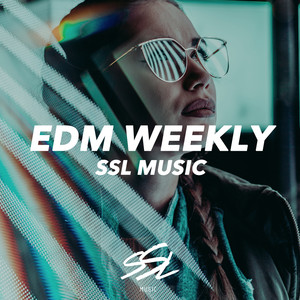
A new study coming from McMaster University in Ontario, Canada, headed by Dora Rosati has found that electronic music is apparently the most ‘infectious’ genre of music.
Based off a genre’s R0 number – a number that shows a disease’s ability to spread – it has shown that electronica produced the highest numbers. To put it into perspective, pop’s R0 was 35, rock’s was 129 and moving up higher, rap/hip-hip had an R0 of 310. Rap/hip-hop’s R0 number may be high in comparison to pop and rock’s, but electronic music blows it out of the water with an R0 of 3,430. Speaking about these results, Thomas Rawson of Imperial College London stated:
“Diseases are limited in how they can spread by requiring physical interaction. The reason why we might see some really sky-high R0s for songs is that you can just make a tweet and you have already infected a hundred people. You can spread a song disease far quicker than you could an infectious disease. There are probably a lot of people in a population that may already be immune to a genre like electronica, because of their existing tastes. My nan, for example, is particularly resistant to the infection of trap and dubstep.”
But how exactly did they measure the numbers? The team looked at a database of more than 1.4 billion songs from discontinued streaming service MixRadio, focusing on the top 1,000 songs downloaded in the UK between 2007 and 2014. They then looked at measuring how well a typical model of infectious disease (SIR model) fitted the download trends of songs of certain genres over time.
“Maybe what those numbers are telling us is that electronica fans tend to be more passionate about their favourite songs … Or maybe the social network of electronica fans is more strongly connected.” […] In the same way that we can now use mathematical models of disease spread to learn things like the average time an individual is infected, the final size of an epidemic, or how long an epidemic will last, we might be able to use these same models to learn things like how long on average an individual will listen to a song, how many people in total will download it, or how long a song might be popular for.” – Dora Rosati
The results were published in ‘Proceedings of the Royal Society A: Mathematical and Physical Sciences’, and you can read it here.
Image credit: Brandon Erlinger-Ford via Unsplash
You may also like...
-
Palms Trax, James Murphy and DJ Marcelle will perform at this year's Lente Kabinet
by Michael Ryan · Published February 3, 2020
-
Nina Kraviz removed from the lineup of three upcoming festivals
by Donald Dominic · Published May 25, 2022
-
Vanilla Ice announces July 4 concert in COVID-19 hotspot
by Miley Price · Published July 2, 2020





























